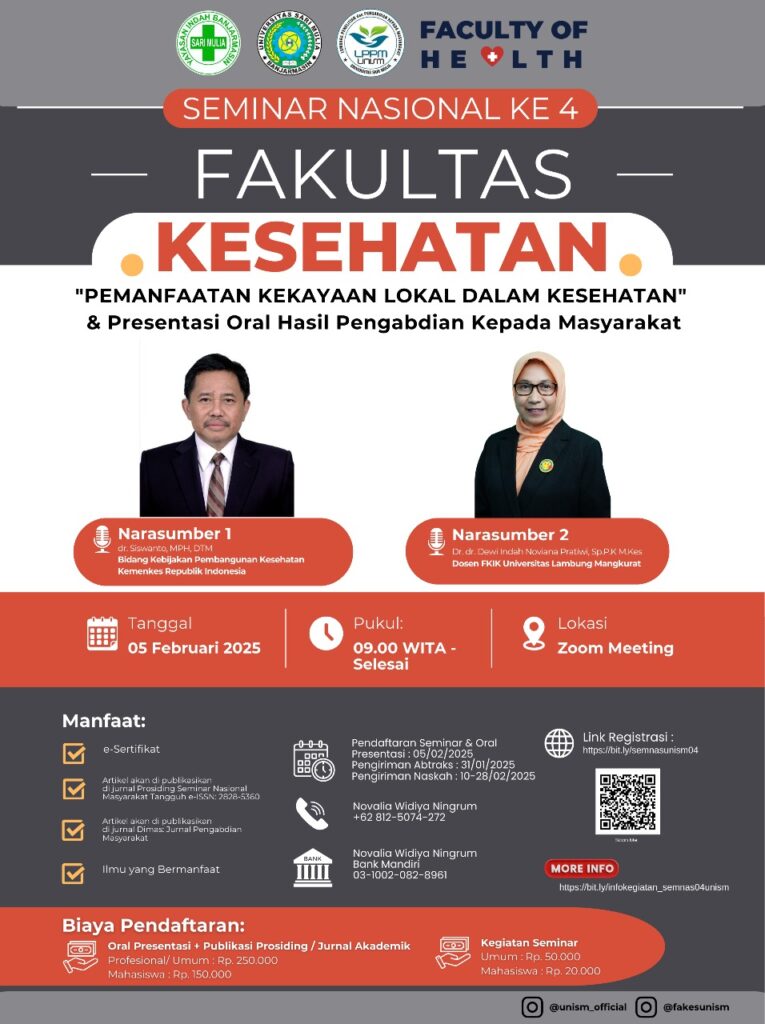P Penganem Gizbang” (Anemia Control Balanced Nutrition) In Gudang Hirang Village, UPTD Puskesmas Sungai Tabuk 1
Keywords:
Quality of Food Consumption, Pregnant WomenAbstract
Anemia in pregnant women is a global and national problem that can increase the risk of maternal and infant morbidity and mortality. The health problem faced by pregnant women in Indonesia is the still high Maternal Mortality Rate (MMR). The condition of pregnant women with anemia can be influenced by direct and indirect factors. Direct factors are factors that influence hemoglobin levels in pregnant women including consumption of Fe tablets, nutritional status, infection. Indirect factors are factors that influence hemoglobin levels in pregnant women which include ANC frequency, parity, obstetric history, age of pregnant women, pregnancy interval, social, economic status, education, culture, efforts to prevent and control anemia in pregnant women in Gudang Hirang Village, Region. The UPTD work at the Sungai Tabuk 1 Community Health Center is carried out using two methods, namely pretest and posttest and evaluating pregnant women for balanced nutritional food. Pregnant women need more nutrients than when they are not pregnant because the nutrients consumed are for the mother and fetus. The fetus grows by taking nutrients from the food consumed by the mother and from nutritional stores in the mother's body. During pregnancy, a mother must increase the amount and type of food consumed to meet the needs of the growing fetus and the needs of the pregnant mother and to produce breast milk. Introducing local foods that are high in iron and easy to find
References
Corneles, S. M., & Losu, F. N. (2015). Hubungan Tingkat Pendidikan Dengan Pengetahuan Ibu Hamil Tentang Kehamilan Resiko Tinggi. Jurnal Ilmiah Bidan, 51-55.
Darawati, M. (2016). Gizi Ibu Hamil. In Hardinsyah, & I. N. Supariasa, Ilmu Gizi : Teori dan Aplikasi (pp. 170-181). Jakarta: Penerbit Buku Kedokteran EGC.
Dinas kesehatan Provinsi NTB,2018. Profil Kesehatan Kota Bima. NTB Ekawati, 2018. Pengantar Ilmu Gizi. Penerbit Alfabeta. jakarta.
Fajrin, F. 2020. “Kepatuhan Konsumsi Zat Besi (Fe) Terhadap Kejadian Anemia Pada Ibu Hamil,” 3(4), hal. 336–342.
Fitriany, Julia, dan Amelia Intan Saputri. 2018. Anemia Defisiensi Besi. Jurnal Averrous, 4(2).
Gevisioner, Febriamansyah, R., Ifdal, & Tarumun, S. (2015). Kualitas Konsumsi Pangan di Daerah Defisit Pangan Provinsi Riau. Jurnal Gizi Pangan, 233- 240.
Harti, L. B., Kusumastuty, I., & Hariadi, I. (2016). Hubungan Status Gizi dan Pola Makan terhadap Penambahan Berat Badan Ibu Hamil. Indonesian Journal of Human Nutrition, Vol.3 No.1, 54-62.
Okvitasari, Y., Darmayanti, D., dan Ulfah, M. 2021. Pengaruh Pemberian Zat Besi dan Sayur Bayam terhadap Peningkatan Kadar Hemoglobin Ibu Hamil dengan Anemia di Wilayah Kerja Puskesmas Martapura I. Jurnal Keperawatan Suaka Insan (Jksi), 6(1): 20-27.
Padmi, D.R.K.N., 2018. Faktor-Faktor Yang Mempengaruhi Kejadian Anemia Pada Ibu Hamil Di Puskesmas Tegalrejo Tahun 2017. Skripsi Sarjana. Jurusan Kebidanan. Politeknik Kesehatan Kementerian Kesehatan, Yogyakarta.
Rinata, E., & Andayani, G. A. (2018). Karateristik Ibu (Usia, Paritas, Pendidikan) dan Dukungan Keluarga dengan Kecemasan Ibu Hamil Trismester III. Jurnal Ilmiah Ilmu-Ilmu Kesehatan, 14-20.
Simbolon, D., Jumiyati, & Rahmadi, A. (2018). Pencegahan dan Penanggulangan Kurang Energi (KEK) dan Anemia Pada Ibu Hamil. CV Budi Utama.
Yuliatin, 2018. Kehamilan. Jilid I. Buku Kedokteran EGC. Jakarta



